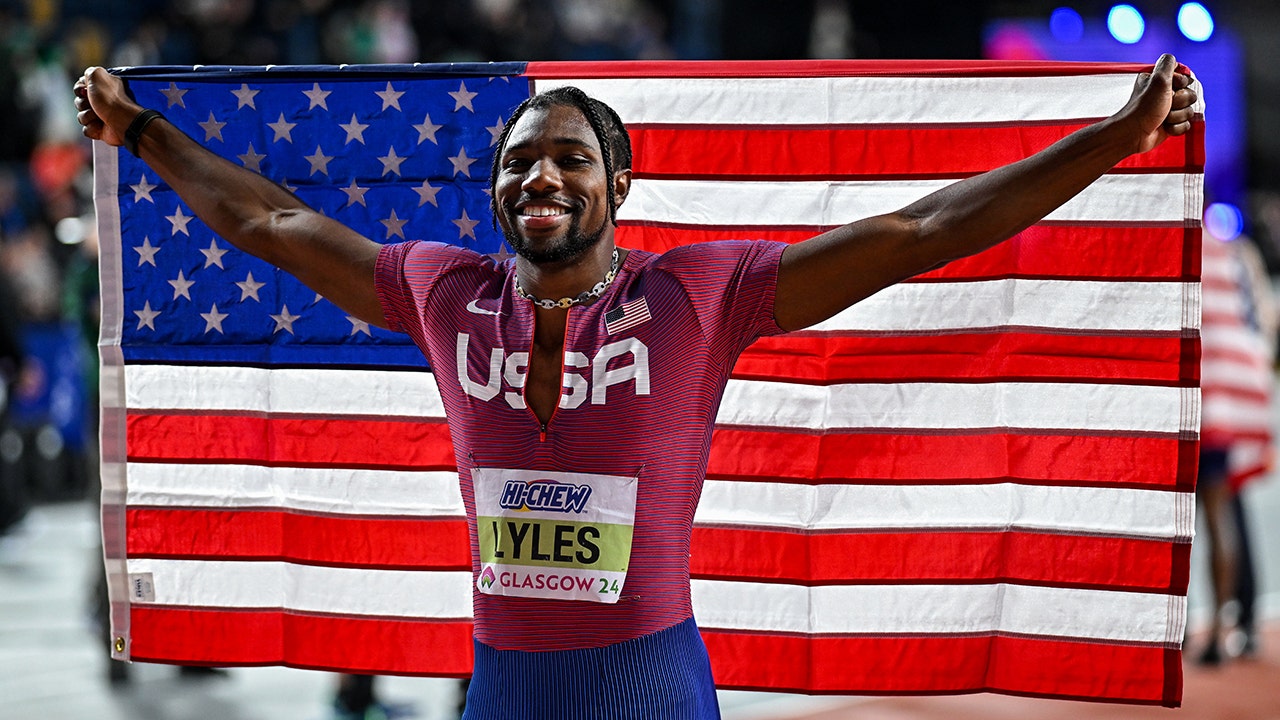PINEHURST, N.C. — It can trick you, this place. It’s all so charming and whimsical, Mayberry turned golf mecca in the sandhills of North Carolina.
You stroll along the brick walking paths through the village, passing the two-story brick buildings filled with cute shops and quaint pubs. More than a million people travel here each year to this Disney World for idyllic golf-themed getaways.
It can trick you into thinking you stumbled onto a golf oasis. Trick you into forgetting this place is a juggernaut, a resort, a full-on corporation with luxury hotels and cottages and 10 courses designed by renowned golf architects. Yes, it may have started with a pharmacy chain owner offering tuberculosis patients a chance to recover in a haven designed by the same man who designed Central Park. But the reasons a place begins are very rarely the same reasons that keep a destination thriving.
Now, Pinehurst Resort calls itself the cradle of American golf. The USGA announced it as the first of its new “anchor sites,” which will host U.S. Opens every 5-6 years for the next 30 years, beginning this week.
Pinehurst brought back the World Golf Hall of Fame. Its relationship with the town is strong and it’s a bucket-list destination for generations of recreational golfers. It is, for the foreseeable future, a central focal point marrying the casual and professional golf worlds.
But it wasn’t that long ago this place was climbing out of $70 million in debt, that it was at war with the people of this town and embroiled in countless lawsuits focusing on issues ranging from predatory management strategies to members feeling cheated.
And it wasn’t so long ago that a private detective who called himself “the Fat Man” had a poster of Pinehurst’s owner on a chair in front of his desk with a simple mission: “I just want this guy nailed to the wall.”
There’s a mantra Robert H. Dedman Jr. repeats at will: “Always Pinehurst, but always better.”

GO DEEPER
From the shadow of the U.S. Open at Pinehurst, a game-changer emerges
But progress doesn’t always go in a straight line. What began as a company town turned into something else when James W. Tufts hired Donald Ross as golf pro and formed Pinehurst No. 1 before completing his masterpiece — Pinehurst No. 2 — in 1907. Ross finished his fourth Pinehurst course before 1920 and the resort had become a premier golf destination with three inns. The town and the resort were so intertwined that resort employees were paid during the Depression in scrip redeemable only at Tufts-owned businesses. And it started its entry into pro golf circles, hosting the 1936 PGA Championship and 1951 Ryder Cup.
But in 1971, the Tufts family sold Pinehurst to Diamondhead Corporation, a real estate project owned by Malcom McLean that took a place rooted in tradition and lined the courses with condos and attempted to modernize the look of Ross’ design. Sacrilege. The prestige of the resort declined, as did its quality, and it compiled $70 million in debt by the time Diamondhead had to hand Pinehurst over to a consortium of eight banks in 1982.

Spectators are turning out in droves to watch Tiger Woods and the rest of the U.S. Open field at Pinehurst this week. (Andrew Redington / Getty Images)
In came the savior, a moniker that became a point of contention for many.
Robert H. Dedman Sr. was the founder of ClubCorp, a Dallas-based corporation that made a killing buying distressed private golf and country clubs and rebuilding them. They eventually owned more than 200 properties around the world, and Dedman Sr. was a billionaire often named by Golf Digest as one of the most important people in golf. He was a charming, self-made man from Arkansas who successfully branded himself as something between a capitalist and a romantic.
“The first time I stood in front of the clubhouse and looked out on all those ribbons of fairway, I got tears in my eyes,” Dedman Sr. told Sports Illustrated in 1999. “I had always venerated Pinehurst for its place in the history of golf, and when I finally saw it I knew instantly that we would take this fallen angel and make it not as good as it was, but better than it had ever been.”
Always Pinehurst, but always better. But better usually comes with costs. Capitalism is a game of winners and losers, and progress often leaves others behind.
Pinehurst was the crown jewel of ClubCorp’s empire, and Dedman Sr. made good on those dreams by restoring tradition and returning Pinehurst to its rightful place in the sport. In fact, he elevated it.
Fifteen years and $100 million after buying it, the 1999 U.S. Open came to Pinehurst. Dedman Sr. died in 2002, but Dedman Jr. (known as Bob) was running much of the company by the 1990s. It hosted the U.S. Open again in 2005. The Dedmans sold ClubCorp in 2006 but kept Pinehurst as their baby, and after a successful restoration it made history by holding the men’s and women’s U.S. Opens in consecutive weeks in 2014. The men’s tournament went 10 years without returning, but with its new anchor site designation Pinehurst has successfully cemented its place at the forefront of American golf.
That build, though, came with pushback. Starting in 1991 and carrying on through 2000, as much as 55 percent (more than 3,000) of Pinehurst members contributed to legal funds for a lawsuit claiming the club brought in too many outsiders, denied them agreed upon access to tee times and improperly raised membership fees.
In 1990, ClubCorp sold its stake in nearby Pinewild Country Club to Japanese cookie maker Tohato Inc. with a deal for Tohato to pay ClubCorp to manage it. By 1996, Tohato sued ClubCorp because it felt hoodwinked, claiming the latter used Pinewild as inexpensive overflow courses for guests paying to stay next door at Pinehurst Resort. Tohato officials also claimed ClubCorp tried to purposely mismanage the property to force Tohato to want out and sell back to Pinehurst at a fraction of the original cost.
Things turned dramatic when Tohato hired the celebrity private detective William Graham to help with the case. Graham was an eccentric who appeared on “Late Night with David Letterman” and “20/20” and was in talks with studios to produce a movie about his life. Graham pursued ClubCorp so hard they ultimately sued him for libel. And in the meantime Graham caused the Dedmans constant headaches.
In 1997, Graham sent out faxes across the country detailing 33 alleged “civil and criminal violations” against ClubCorp. He was quoted in South Carolina’s The State newspaper calling Dedman Sr. and his company, “a bunch of backstabbing, corkscrewing, double-dealing, lying, cheating, stealing (SOBs).”
All of this ClubCorp of course used in its libel case, which was folded into a seven-figure settlement paid by Tohato to ClubCorp. But those faxes led to major outlets like The Wall Street Journal and The New York Times investigating and publishing large pieces painting ClubCorp in an unflattering light. In the two years before the U.S. Open, at least seven of the company’s 70 country clubs were involved in lawsuits against ClubCorp filed by either members homeowners or a co-owner, per the New York Times. (ClubCorp eventually pulled out of its management arrangement at Pinewild, telling members in a letter it had “been placed in a position that makes it impossible to do our job.”)
So when Pinehurst hosted the 1999 U.S. Open — what was supposed to be Dedman Sr.’s crowning achievement — he instead sat with Sports Illustrated for a profile on how such a beloved figure was suddenly disliked by so many around the club.
“Just because we have a great reputation, people think that if they make a few grandiose statements we’ll cave in and pay their blackmail,” Dedman Sr. told SI. “We can’t afford to do that. We have had people go to obnoxious lengths to try to get a settlement. We have zero tolerance for that behavior. Our philosophy, to quote one of our former Presidents, is millions for defense but not one cent for tribute.”

When Pinehurst hosted the 1994 U.S. Senior Open the No. 2 course barely resembled Donald Ross’ original design. It’s been since restored. (Gary Newkirk / Allsport via Getty Images)
But the public relations issues for Pinehurst really took over when the battles started with the townspeople. In 1995, a Pinehurst resident named Edmund Dietrich wrote a letter to The Pilot, the local paper in Southern Pines, saying tips given to resort employees were being withheld. Dietrich was sued for libel, though ClubCorp later dropped it. Then, ClubCorp reportedly threatened local businesses for using Pinehurst in their names, citing trademark infringement. It claimed Pinehurst was only the name of the resort and facilities, and that the town was the “Village of Pinehurst.”
ClubCorp lawyer Stephen Trattner famously said: “I don’t believe there is a Pinehurst, N.C. You may call it that, and the mail may get there that way, (but) you don’t live in Pinehurst. You live in the Village of Pinehurst.”
Dedman Sr. had created an environment in which members and guests were treated like royalty, with staff remembering their favorite cocktails and making sure to use their name at least four times a trip, but the people who lived in the town — a town founded to help people get healthy — felt alienated. Pinehurst Business Guild became the Village of Pinehurst Business Guild. Companies like Pinehurst Interiors had to change their name to Village Design Group, which still stands today.
If Dedman Sr. was the charming personality who could light up a room, Bob Jr. was the hard-nosed, forward-thinking CEO who, his father admitted, was a more organized executive. But if at the time Dedman Jr. was labeled as a bottom line executive pushing for growth, he’s also been the one overseeing its public rehabilitation.

GO DEEPER
U.S. Open Big Board: After Scottie Scheffler, how does the field stack up at Pinehurst?
Another funny thing about progress is success tends to mend most wounds. Pinehurst has become more and more of a powerhouse in the world of golf, bringing millions and millions of tourism dollars to the area each year. Dedman Jr. founded a local Boys & Girls Club chapter in Pinehurst in 1999 and now receives local hospitality awards. While the mayor back in 1999 was calling his father arrogant and a bully, former Pinehurst mayor Nancy Roy Fiorillo (2011-2019) raved about all the good Dedman Jr. does and how great Pinehurst Resort is for the town.
“Bob Dedman Jr. is Doing All the Good He Can” was the headline of a story in The Pilot last week. Similar pieces have been written by Global Golf Post and PineStraw Magazine. Maybe some of it is from the ClubCorp sale — it’s far easier to be magnanimous proprietors when you’re running one iconic club and not a conglomerate fighting for every little margin.
What’s clear is Pinehurst is now thriving. More than 12 million Americans have traveled to play golf each of the past two years, up about 20 percent over the historical average, according to the National Golf Foundation. Pinehurst attracts a large chunk of that.
Every resort is trying catch up to it, a place that can boast both incredible history with everyone from Bobby Jones to Tiger Woods having played here, mixed with constant innovation and new courses. The restoration of No. 2 by the architect team of Bill Coore and Ben Crenshaw took the already famous course to new heights by removing rough and leaving tough, sandy areas off the fairways. Gil Hanse’s redesign of No. 4 has boosted it in significance. All of the top designers of past and present have contributed to one course or another.
And the resort keeps pushing itself off the course, turning an abandoned steam plant into a brewery and refurbishing the clubhouse with lush new digs for members. They expanded the Deuce Grill, restored one inn and renovated another. All of that on top of the USGA’s new Golf House Pinehurst and the World Golf Hall of Fame, which returned from St. Augustine, Fla.
The Dedmans tried to ensure that it was always about Pinehurst but always making it better, and they’ve continued to push and push to a point it seems unstoppable going forward. And now, the conversation of the week is entirely about the course and how great it will be to watch. Not the issues of the past.
They couldn’t pin the Dedmans to the wall.
(Top photo: Tracy Wilcox / PGA Tour via Getty Images)






